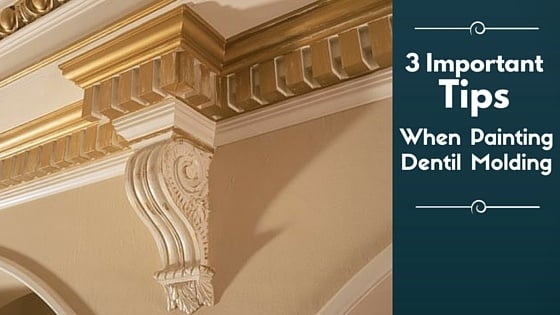 Dentil molding is an inexpensive decorative feature homeowners can use to transform their standard homes or ofices into beautiful living spaces where architecture meets amazing art. But dentil molding, with its sharp points and crisp, rigid lines, is no longer just an architectural detail that can land grandiose exteriors or interiors a masculine vibe. Today, the original dentil molding profile can be remodeled and “sweetened” with other details to fit any interior, including feminine decor along with the plainest bedrooms, kitchens, bathrooms and home offices, and increase the market value of a house.
Dentil molding is an inexpensive decorative feature homeowners can use to transform their standard homes or ofices into beautiful living spaces where architecture meets amazing art. But dentil molding, with its sharp points and crisp, rigid lines, is no longer just an architectural detail that can land grandiose exteriors or interiors a masculine vibe. Today, the original dentil molding profile can be remodeled and “sweetened” with other details to fit any interior, including feminine decor along with the plainest bedrooms, kitchens, bathrooms and home offices, and increase the market value of a house.
Leaving aside the impressive versatility of this type of molding, one thing Florida professional house painters admit is that painting dentil molding can be an overwhelming task, particularly for a beginner with basic painting skills. If you wonder how you’re going to prepare and paint every nook and cranny of your molding, here are three tips that can make your job a whole lot easier.
1. Paint it before installation.
Many residential painting contractors will advise you not to paint molding prior to installing it. Though we agree with them, we do realize that painting dentil molding with intricate details, after the installation, is an almost impossible task for most homeowners. If you’re thinking of adding dentil molding to your home, you can paint it before the installation, but make sure that: you let the paint fully dry before attempting to install the molding and you’re going to touch up imperfections and repaired areas later on.
To make things even easier, we recommend using synthetic molding, which is available in a variety of sizes and styles. Generally made of polyurethane foam or vinyl, this type of molding weighs less, and is less expensive and more resistant than wood molding. Since synthetic moldings usually come pre-primed from manufacturers, you can apply directly an oil-based or acrylic latex finish in your choice of color.
2. Prepare surfaces before you paint.
If you’re painting molding as part of a home improvement project, proper surface preparation is critical to ensure flawless results. Here are the steps you should take to successfully prepare dentil molding for painting:
- using a nail punch, sink the heads of visible nails;
- spackle small holes, cracks, and gaps with a high-quality wood filler; use joint compound for large gaps; smooth the filler or the joint compound out with your fingers;
- scrape away excess filler residue while the product is still workable and wipe the area with a damp rag;
- let the filler and joint compound dry completely, and sand the entire surface with 120- or 150-grit sandpaper until all rough spots and imperfections are gone;
- vacuum all moldings, wipe them down with a damp rag and carefully prime the entire surface, including all the details and sides, with a good-quality primer;
- let the primer dry and sand the surface again with a finer-grit sandpaper (e.g. 180- or 220-grit).
3. Use specialty brushes or consumer-grade paint sprayers.
Angled-sash varnish brushes, enamel brushes with flagged tips and tapered edges, and foam brushes are best suited for detail, sharp-edge work like painting dentil molding. But let’s be honest: painting highly decorative molding profiles with a few paint brushes can be a real challenge even for an experienced painter. For a regular homeowner trying his hand at painting dentil molding, it would be much easier to use a handheld airless paint sprayer to pain exterior walls or a high-volume, low-pressure (HVLP) paint sprayer for interior work.
By following all these tips, you can get a gorgeous dentil molding that will make your exterior and interior stand out.
OR…you could just leave it to the professional paint contractors. For a truly professional paint job, from start to finish, give us a call today at (904)-641-4800 or at (813)-308-0388. Whether you’re looking for Florida professional painting services for an apartment, a custom home, a HOA or a business in Jacksonville, Tampa or surrounding areas, we can get the job done according to the code, with appropriate permits and licenses, on time and right the first time.






